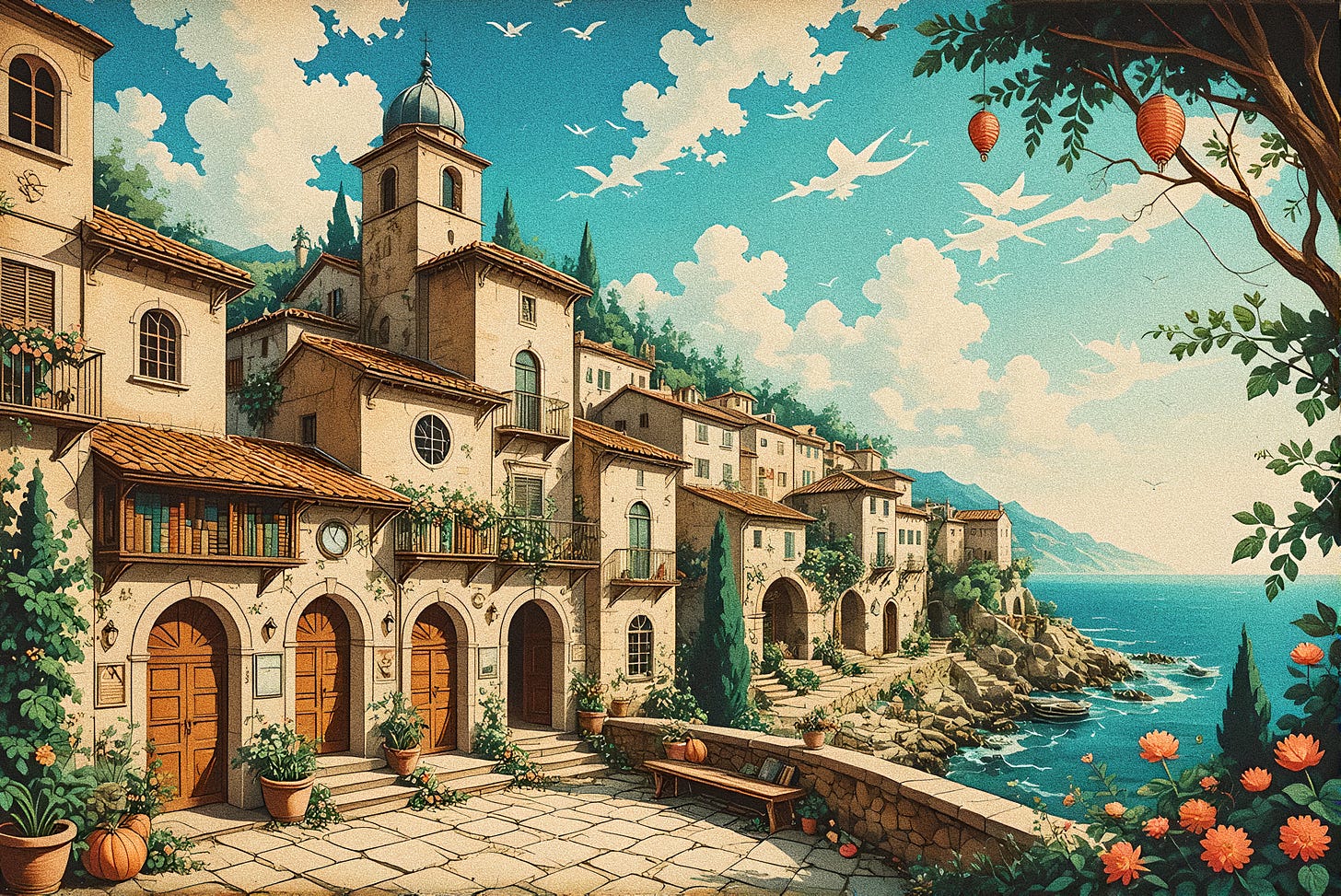Thread 009: Letters from Two Cities (For Now)
On finding creative rhythm between Toronto's pace and digital landscapes, while Barcelona and Mallorca whisper from across the ocean...
The morning light in Toronto has a particular quality in late spring—it arrives with conviction, streaming through the east-facing windows of my Queen East apartment with a directness that feels quintessentially North American. No gentle Mediterranean suggestion of daybreak, but rather an announcement: the day has begun, and there are worlds to build.
I've come to appreciate this light. The way it bounces off the brick walls across the street, creating copper-toned reflections that dance across my workspace. The way it illuminates the spines of books stacked beside my reading chair—a collection that has grown to include more volumes on community architecture and digital cartography alongside my usual art histories and Spanish novels. These days, my mornings begin with this light, a cortado from the café downstairs (not quite Barcelona's café con leche, but ritual matters more than perfection), and the rhythmic clatter of streetcars passing every seven minutes.
Toronto shapes my creative…
Keep reading with a 7-day free trial
Subscribe to The Raconteuse to keep reading this post and get 7 days of free access to the full post archives.



